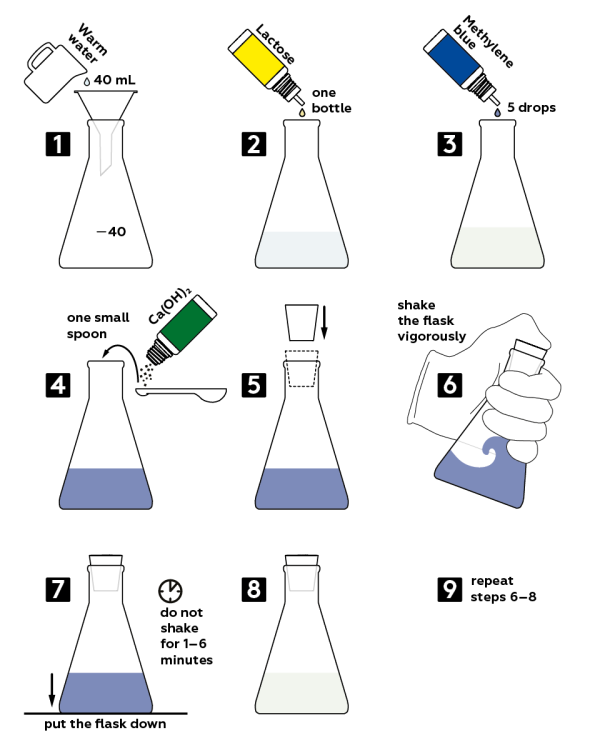Oxyhydrogen
Obtain oxyhydrogen mixture by water electrolysis
Difficulty:
Danger:
Duration:
40 minutes
Reagents
Safety
- Put on protective gloves and eyewear.
- Conduct the experiment on the plastic tray.
- Remove protective gloves before lighting the candle.
- Keep a bowl of water nearby during the experiment.
General safety rules
- Do not allow chemicals to come into contact with the eyes or mouth.
- Keep young children, animals and those not wearing eye protection away from the experimental area.
- Store this experimental set out of reach of children under 12 years of age.
- Clean all equipment after use.
- Make sure that all containers are fully closed and properly stored after use.
- Ensure that all empty containers are disposed of properly.
- Do not use any equipment which has not been supplied with the set or recommended in the instructions for use.
- Do not replace foodstuffs in original container. Dispose of immediately.
General first aid information
- In case of eye contact: Wash out eye with plenty of water, holding eye open if necessary. Seek immediate medical advice.
- If swallowed: Wash out mouth with water, drink some fresh water. Do not induce vomiting. Seek immediate medical advice.
- In case of inhalation: Remove person to fresh air.
- In case of skin contact and burns: Wash affected area with plenty of water for at least 10 minutes.
- In case of doubt, seek medical advice without delay. Take the chemical and its container with you.
- In case of injury always seek medical advice.
Advice for supervising adults
- The incorrect use of chemicals can cause injury and damage to health. Only carry out those experiments which are listed in the instructions.
- This experimental set is for use only by children over 12 years.
- Because children’s abilities vary so much, even within age groups, supervising adults should exercise discretion as to which experiments are suitable and safe for them. The instructions should enable supervisors to assess any experiment to establish its suitability for a particular child.
- The supervising adult should discuss the warnings and safety information with the child or children before commencing the experiments. Particular attention should be paid to the safe handling of acids, alkalis and flammable liquids.
- The area surrounding the experiment should be kept clear of any obstructions and away from the storage of food. It should be well lit and ventilated and close to a water supply. A solid table with a heat resistant top should be provided
- Substances in non-reclosable packaging should be used up (completely) during the course of one experiment, i.e. after opening the package.
Step-by-step instructions
Step-by-step instructions
- Prepare the solution of a reducing agent — lactose. Insert the funnel into the flask and pour in 40 mL of warm water. Then add there all the glucose from the bottle (5 mL).
- Measure 5 drops of 0.25% methylene blue solution into the flask — it will act as an oxidizing agent in our experiment.
- Add two small spoons of calcium hydroxide Ca(OH)2 solution to make the solution basic. Close the flask with a rubber stopper without holes.
- Set the flask aside and wait 1—6 minutes until the solution turns colorless.
- Vigorously shake the flask, and the solution will turn blue! Wait for the solution to lose its color and shake the flask again. You can repeat this cycle many times!

Disposal
Dispose of solid waste together with household garbage. Pour solutions down the sink. Wash with an excess of water.